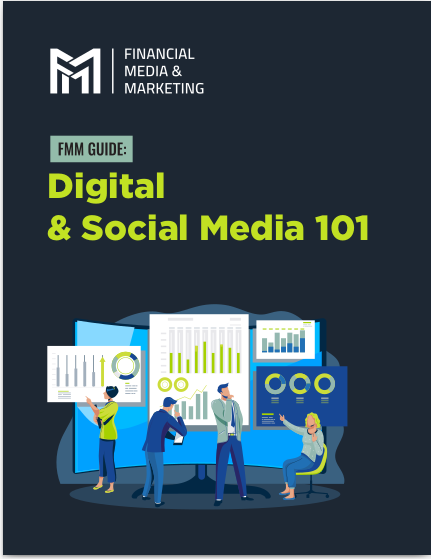Key Takeaways
-
Thought leaders build influence by consistently sharing valuable insights and engaging with their communities authentically.
-
Trust is earned through transparency, expertise, and a willingness to foster meaningful connections.
Why Thought Leadership Matters
Becoming a thought leader isn’t about self-promotion—it’s about providing value and inspiring trust. For financial advisors, thought leadership can set you apart in a competitive industry, positioning you as a trusted resource for your audience. When people view you as a credible authority, they’re more likely to seek your guidance and recommend your services.
Thought leaders aren’t just experts; they’re problem-solvers and visionaries who help their audience navigate challenges and seize opportunities. By sharing knowledge and offering unique perspectives, you can influence conversations, build a loyal following, and create opportunities for collaboration and growth. Moreover, thought leadership extends beyond just offering solutions—it’s about sparking inspiration and empowering others to take action confidently.
Successful thought leaders are also proactive in recognizing shifts within their industry. This ability to anticipate and address emerging trends enhances their relevance and influence. Instead of simply reacting to changes, they shape the narrative, becoming voices people turn to for guidance during uncertain times.
Building the Foundations of Thought Leadership
Understand Your Audience
The cornerstone of effective thought leadership is understanding who you’re trying to reach. Ask yourself:
-
What are their pain points and aspirations?
-
What questions do they frequently ask?
-
How can your expertise address their specific needs?
Tailoring your content to your audience’s interests ensures it resonates and establishes your relevance. When you demonstrate that you understand their challenges, your audience will begin to view you as an ally who is invested in their success.
Clarify Your Expertise
Thought leaders are known for excelling in specific areas. Focus on:
-
The unique skills or knowledge you bring to the table.
-
Topics where you can offer fresh, actionable insights.
-
Industry trends or challenges you’re passionate about addressing.
By narrowing your focus, you’ll establish a clear niche, making it easier for your audience to associate you with a particular expertise. Additionally, honing in on your niche allows you to refine your messaging and deliver content that speaks directly to the needs of your audience.
Create a Content Strategy
Thought leadership thrives on consistent, high-value content. Develop a plan that includes:
-
Blog posts, videos, or podcasts sharing your insights.
-
Regular updates on industry trends or news.
-
Resources like guides or infographics that address common challenges.
A well-executed content strategy builds credibility and keeps your audience engaged. To keep your strategy effective, schedule periodic reviews to ensure your content aligns with evolving audience preferences and industry developments.
Strategies for Building Influence
Share Insights on Current Trends
Staying informed about your industry’s latest developments positions you as a forward-thinking leader. Share your take on:
-
Emerging financial technologies or tools.
-
Regulatory changes and their implications.
-
Shifts in market dynamics or client preferences.
Providing timely, relevant analysis shows your audience that you’re always in tune with what matters most to them. Consistently highlighting current trends positions you as the go-to resource for keeping up with an ever-changing industry landscape.
Engage With Your Community
Influence grows when you connect with your audience. Make an effort to:
-
Respond to comments and questions on social media or blog posts.
-
Participate in forums or industry groups.
-
Attend events or webinars to share your expertise directly.
Engagement demonstrates that you’re approachable and invested in helping others succeed. Active participation in discussions not only solidifies your reputation but also fosters trust and rapport within your community.
Collaborate With Other Experts
Partnering with peers or influencers in your field amplifies your reach and credibility. Consider:
-
Co-authoring articles or whitepapers.
-
Hosting joint webinars or panel discussions.
-
Sharing or commenting on their content to spark dialogue.
Collaborations position you as an active participant in broader industry conversations. These partnerships not only diversify your audience but also enhance your credibility by association.
Building Trust Through Transparency
Be Honest About Your Limits
Thought leaders don’t pretend to know everything. Acknowledge when you’re outside your expertise and direct your audience to reliable resources. This honesty builds trust and reinforces your credibility. Admitting limitations also shows humility, which resonates positively with your audience.
Share Personal Stories
Authenticity is key to building trust. Share:
-
Lessons you’ve learned from challenges or setbacks.
-
Personal experiences that shaped your approach to your work.
-
Your vision and values as a professional.
Storytelling humanizes your brand and helps your audience relate to you on a deeper level. When people see the person behind the expertise, they’re more likely to feel a personal connection and trust your guidance.
Highlight Your Achievements
While humility is important, don’t shy away from sharing accomplishments that demonstrate your expertise. Showcase:
-
Awards or certifications.
-
Milestones that reflect your impact in your field.
Balanced self-promotion reinforces your authority without coming across as boastful. Celebrating your achievements inspires confidence in your capabilities and motivates your audience to engage with you further.
Leveraging Digital Platforms
Optimize Your LinkedIn Profile
LinkedIn is a powerful tool for thought leadership. Ensure your profile:
-
Clearly communicates your expertise and value.
-
Includes recommendations or endorsements from peers and clients.
-
Features a portfolio of your best content.
Regularly share posts, articles, or updates to keep your network engaged. A strong LinkedIn presence helps you stay visible and top-of-mind among professionals in your niche.
Start a Blog or Podcast
Creating your own platform gives you complete control over your message. Focus on:
-
Topics that align with your audience’s interests.
-
Providing actionable advice they can apply immediately.
-
Building a content library that showcases your depth of knowledge.
A dedicated platform establishes you as a go-to resource in your niche. Over time, this consistent output strengthens your reputation and creates opportunities for new engagements and collaborations.
Use Social Media Strategically
Social platforms allow you to amplify your reach and engage with diverse audiences. To maximize your impact:
-
Share a mix of original content and curated industry insights.
-
Engage with followers through comments or direct messages.
-
Use visuals or infographics to make your posts more engaging.
Consistency and interaction are key to growing your influence on social media. These platforms also offer real-time feedback, allowing you to refine your messaging for greater impact.
Measuring Your Impact
Track Engagement Metrics
Evaluate how well your content resonates by monitoring:
-
Website traffic and page views.
-
Social media likes, shares, and comments.
-
Email open and click-through rates.
These metrics provide insights into what’s working and where you can improve. Regularly reviewing these analytics ensures your strategy remains aligned with your audience’s expectations.
Gather Feedback
Ask your audience for their input to refine your approach. Consider:
-
Surveys to identify topics they’d like you to cover.
-
Open-ended questions inviting them to share their thoughts.
-
Analyzing comments or messages for recurring themes.
Feedback ensures your content stays relevant and valuable. Encouraging dialogue also deepens your relationship with your audience.
Reflect on Your Goals
Regularly assess your progress toward your thought leadership objectives. Are you:
-
Growing your audience and influence?
-
Building stronger relationships with your community?
-
Creating opportunities for new collaborations or business ventures?
Adjust your strategy based on what’s yielding the best results. Thought leadership requires flexibility and an ongoing commitment to learning and growth.
Turning Expertise Into Influence
Becoming a thought leader is a journey, not a destination. By consistently providing value, engaging authentically, and staying transparent, you can build influence and foster trust in your community. Thought leadership isn’t about being the loudest voice—it’s about being the most trusted one. Focus on building relationships and delivering meaningful insights, and you’ll establish yourself as a go-to authority in your field.










